These lovely lemon pudding cakes magically bake up with pudding at the bottom and a light as air cake on top. Make in individual servings or as one large pudding.
I am a sucker for anything lemon, but warm lemon pudding cakes might just be my favourite way to enjoy lemon. Preparing these pudding cakes involves a couple of steps.
First you make the lemony pudding base, using egg yolks, lemon juice, lemon zest, sugar and a bit of flour, for thickening. Then separately, you whip up the egg whites with a bit of sugar. Both of these parts are then gently folded together. As it bakes, the creamy lemon pudding cooks on the bottom while the egg whites float to the top and cook up into a soft meringue-like “cake”.
I should point out that it really isn’t cake, as we typically think of it. It’s very light. Souffle-like. I’ve offered some tips on both these things below in the Recipe Tips!
If you’re looking for a dessert that is light and not too sweet, this is a perfect choice. It would be great for finishing a special meal as the flavour is fresh, but it’s light enough to be enjoyed on top of a big meal. This pudding kept well in the fridge, without suffering much at all, if you need to make it ahead a bit. Just cover with plastic wrap once cooled, refrigerate and re-warm slightly before serving.
Ingredients and Substitutions
Lemons – you will need to start with fresh lemons. You can use regular lemons or Meyer lemons. Use slightly more lemon juice if using Meyer lemons.
Recipe Tips
- The cups that I baked my puddings in are marked as oven-safe. I wouldn’t suggest using cups that don’t clearly indicate they will be safe in the oven, as bad things could happen to them and I’d feel terrible about that.
- Separate your eggs carefully. Even the smallest amount of yolks in your whites will cause your egg whites not to whip up well.
- If using the same bowl for both the cake and egg whites, be sure to wash well in between. Egg whites will not whip up well if there is any grease or oil in the bowl.
How to Whip Egg Whites
- Always start with a squeaky clean and completely dry bowl. Any bit of water or grease in the bowl will interfere with the egg whites whipping well.
- Starting with fresh, room temperature egg whites is best.
- If using a stand mixer, use the whisk attachment. Start mixing the egg whites on LOW speed until they are very foamy (like a bubble bath!). Increase the mixer speed to MEDIUM speed and continue mixing until soft peaks form. To test for soft peaks, you would stop the mixer. Dip the whisk or beaters in the egg whites then lift out and turn upside down with the peak at the top. Soft peaks will form, but then start to droop. The soft peak stage is typically when sugar is added to the egg whites. Add sugar slowly, with the mixer on low. For stiff peaks, continue mixing on medium speed a little longer, testing regularly. When you lift the beater and turn upside down, the peak will form and stay upright, without drooping. You know you have stiff peaks if you could hold the bowl of whipped egg whites over your head and stay clean :)
How to Fold in Egg Whites
Once you have your perfect egg whites, be sure you don’t stir out all the wonderful lightness you just whipped in. “Folding” involves using a rubber spatula to carefully incorporate the egg whites with the batter. Since the batter is much heavier than the whites, you need to do this slowly and lightly.
Once you’ve spooned the whites over the batter, use a rubber spatula using the following technique: Using the edge of the spatula like a blade, slice through the mixture from 12 o’clock position to 6 o’clock position. When you get to 6 o’clock, twist the spatula blade clockwise, then use it to lift some of the batter at the bottom over the egg whites. Rotate the bowl slightly and repeat this motion. Keep doing this until the whites are combined with the batter.
Want to save this recipe?
Enter your email and I'll send it to your inbox. Plus, you'll get great new recipes from me every week!
By submitting this form, you consent to receive emails from Seasons and Suppers.
You can unsubscribe at any time.
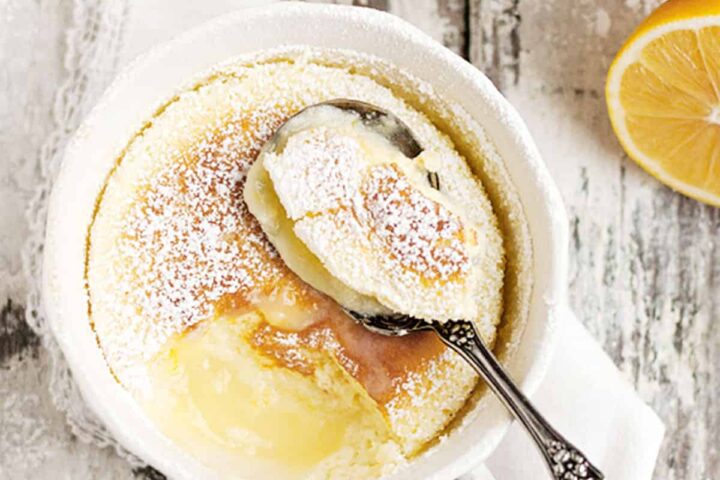
Get the Recipe: Lemon Pudding Cake
Ingredients
- 2 Tablespoons butter, at room temperature
- 1 cup white sugar, DIVIDED
- 3 large eggs, separated
- 1 Tablespoons lemon zest
- 1/4 cup all-purpose flour
- 1/4 teaspoon (g) salt
- 1 cup milk
- 1/2 cup freshly squeezed lemon juice, (3-4 lemons) or slightly more if using Meyer lemons
- 2 Tablespoons icing/confectioners sugar, for garnish
Instructions
- Preheat oven to 350° F (regular bake setting/not fan assisted) with rack in centre of the oven and lightly butter one 1.5 quart baking dish or 4-6 individual, small ramekins. Have ready a high-sided roasting pan and place the prepared dish (or dishes) in to the roasting pan. Bring 8-10 cups of water to a simmer (will be added to the roasting pan to bake the puddings). Separate your eggs and have ready.
- Set aside 2 Tbsp. of the white sugar. Add the rest of the sugar to a large bowl or the bowl of a stand mixer. Add the butter and beat (with stand mixer or electric mixeuntil mixture is grainy but light. Add the egg yolks one at a time, beating well after each addition. Add the lemon zest and mix in. Add the flour and salt and mix. Add the milk and lemon juice and mix until combined. Set aside, or if using your stand mixer, remove to a large bowl and wash your mixer bowl really well (you'll be whipping the egg whites in it next, so be sure it is squeaky clean!).
- In another bowl or the bowl of a stand mixer, beat your egg whites until they're frothy and beginning to form soft peaks. Sprinkle in the reserved 2 Tbsp. of white sugar and beat again until stiff peaks form.
- Spoon the whipped egg whites on top of the egg yolk mixture. Using a spatula, gently fold the egg whites in to the egg yolk mixture by pulling a bit of the batter up and over the egg whites. Continue working gently until the mixture is uniform in color and texture. Do not over mix, but be sure there aren't any large chunks of egg whites.
- Pour or ladle your batter in to the prepared dish or dishes, set in the roasting pan. Carefully pour simmering water in to the roasting pan so it comes about halfway up the sides of the baking dish. Carefully transfer the roasting pan with the water and ramekins in to the preheated 350° oven. Pudding(will bake anywhere from 30 minutes (for small, individual servingto 45 minutes (for one large pudding). Baking times will vary though, so do watch closely. You want the top to be firm and golden, but not browned.
- Remove the pudding from the oven and transfer baking dish or dishes to a cooling rack. Allow to cool for 10 minutes before dusting with icing/confectioners sugar. Serve warm and enjoy!
Notes
More Lemon Recipes to Love!
Hi! I’m Jennifer, a home cook schooled by trial and error and almost 40 years of getting dinner on the table! I love to share my favourite recipes, both old and new, together with lots of tips and tricks to hopefully help make your home cooking enjoyable, stress free, rewarding and of course, delicious!


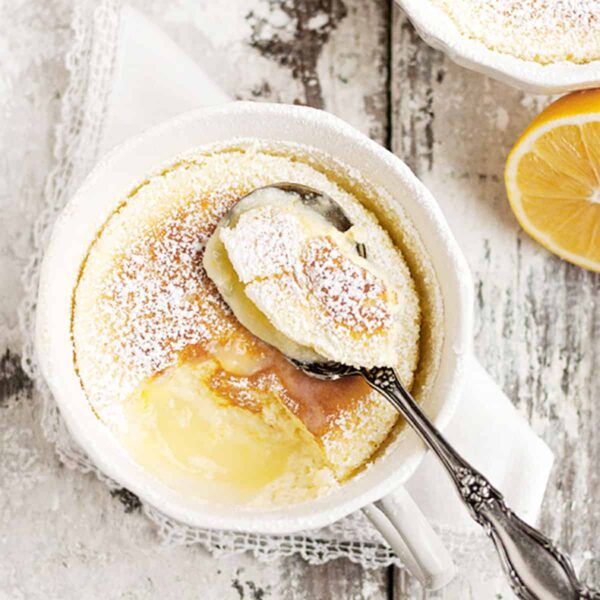
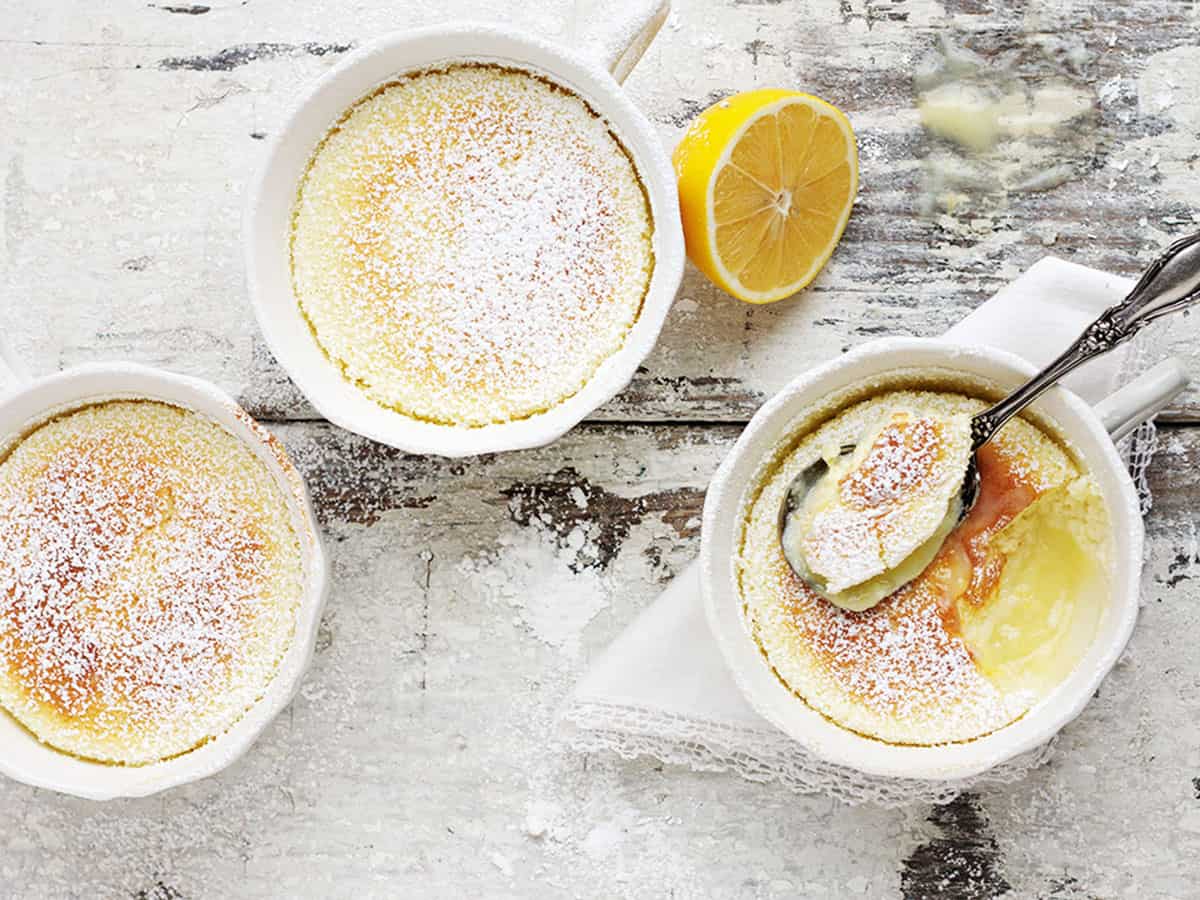
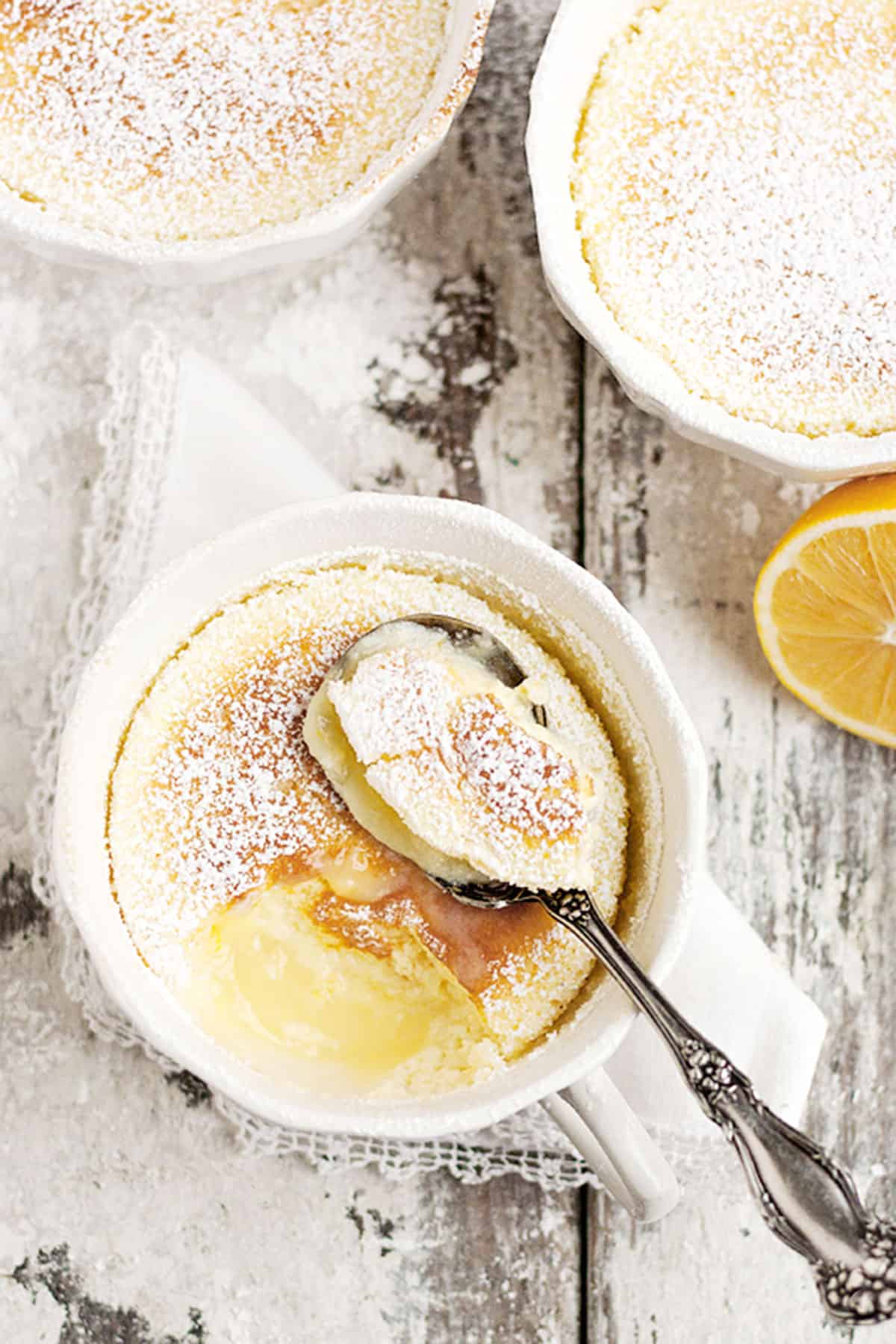
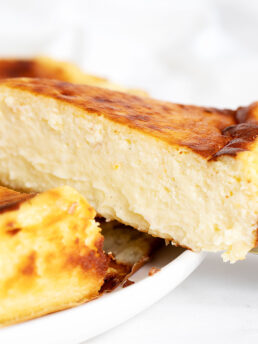
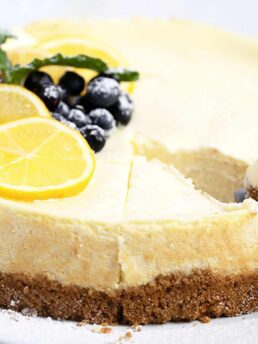
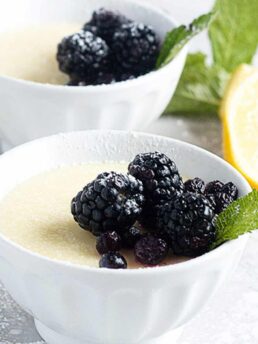

Can the Lemon Pudding Cake be made in advance?
They could. Cool, cover and refrigerate if making well in advance or just leave at room temperature for a short time. Take out of the refrigerator to take the chill off before serving or warm briefly in the microwave to serve warm.
What size ramekin should be used – how many oz.?
Hi Michelle, somewhere between 4oz and 6oz is perfect.
My spouse was asking for pouding chômeur for dessert when we host next week. I thought it might be too heavy for summer. Then I came across this recipe which is like the more sophisticated summer version of the old French-Canadian classic.
Would using 10% coffee cream make this too rich?
Hi Manon and I think 10% cream would be fine. The lemon flavour would keep it from being too rich, I think.